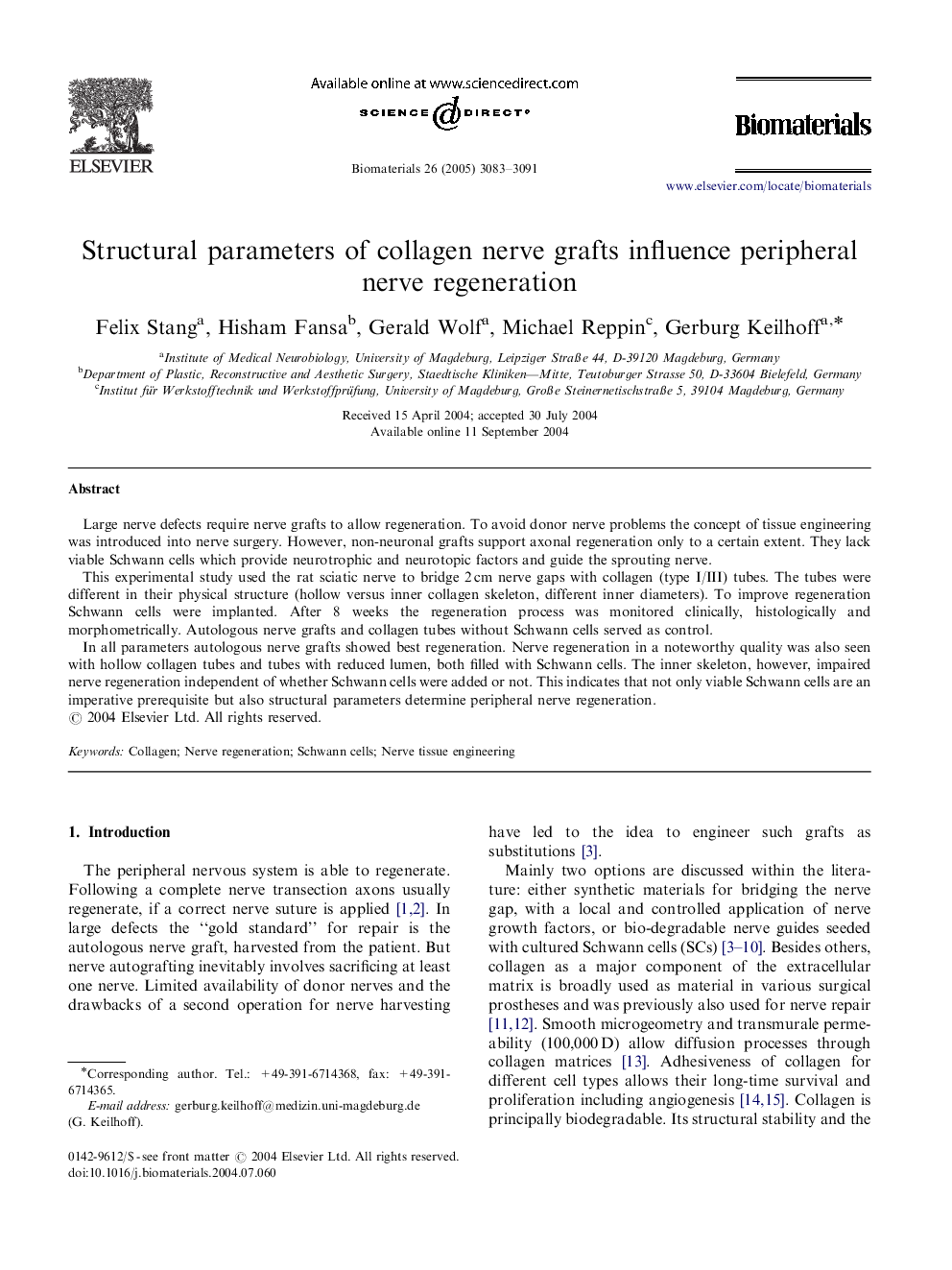| Article ID | Journal | Published Year | Pages | File Type |
|---|---|---|---|---|
| 12257 | Biomaterials | 2005 | 9 Pages |
Large nerve defects require nerve grafts to allow regeneration. To avoid donor nerve problems the concept of tissue engineering was introduced into nerve surgery. However, non-neuronal grafts support axonal regeneration only to a certain extent. They lack viable Schwann cells which provide neurotrophic and neurotopic factors and guide the sprouting nerve.This experimental study used the rat sciatic nerve to bridge 2 cm nerve gaps with collagen (type I/III) tubes. The tubes were different in their physical structure (hollow versus inner collagen skeleton, different inner diameters). To improve regeneration Schwann cells were implanted. After 8 weeks the regeneration process was monitored clinically, histologically and morphometrically. Autologous nerve grafts and collagen tubes without Schwann cells served as control.In all parameters autologous nerve grafts showed best regeneration. Nerve regeneration in a noteworthy quality was also seen with hollow collagen tubes and tubes with reduced lumen, both filled with Schwann cells. The inner skeleton, however, impaired nerve regeneration independent of whether Schwann cells were added or not. This indicates that not only viable Schwann cells are an imperative prerequisite but also structural parameters determine peripheral nerve regeneration.
